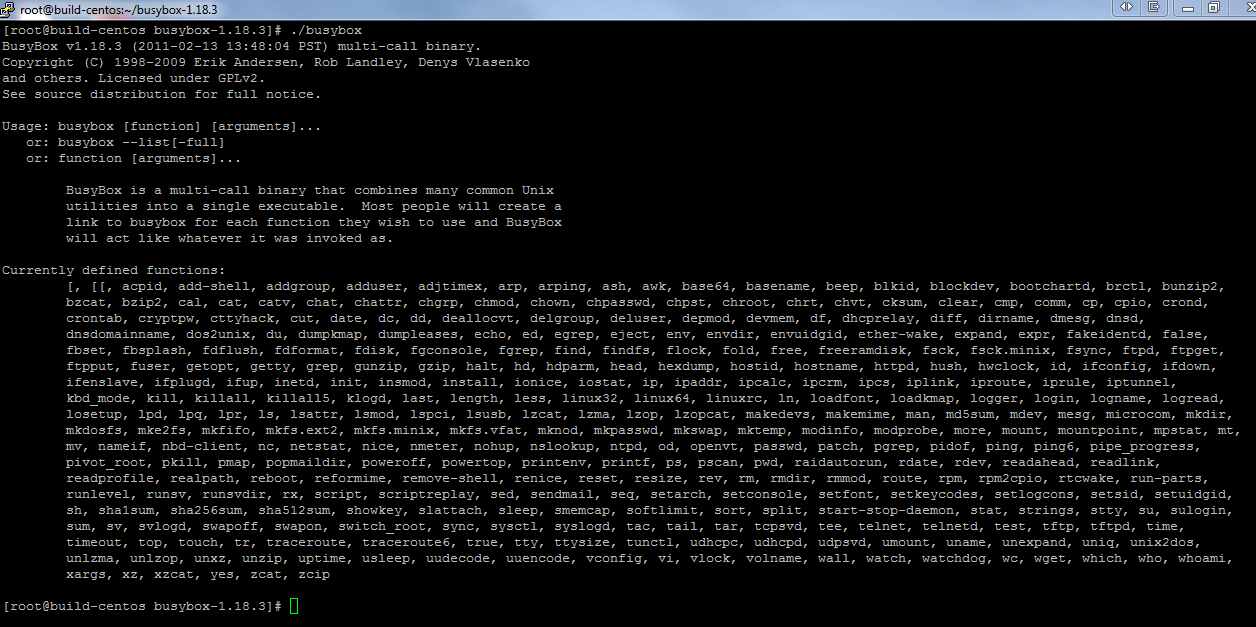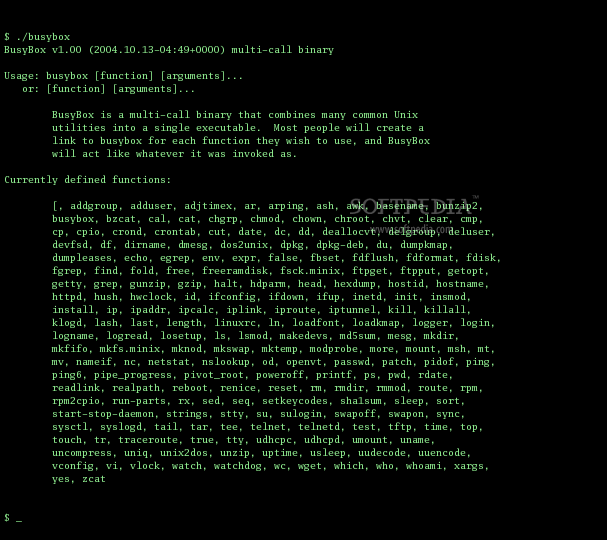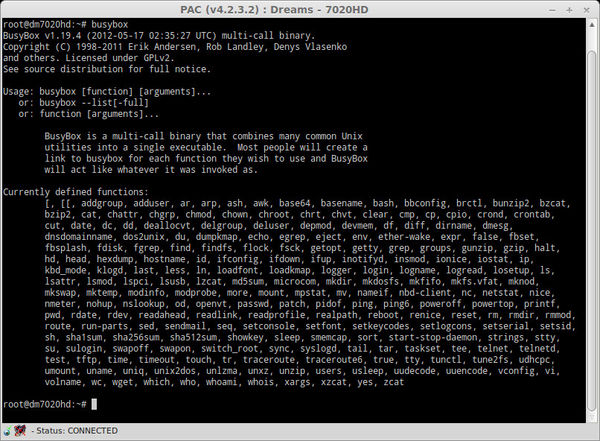BusyBox
BusyBox is a computer program that various elementary standard Unix utilities combined into a single program. It runs on various POSIX environments such as Linux, Android, or FreeBSD. However, many tools are designed to work with the interfaces of a Linux kernel. BusyBox has been created to work on embedded operating systems with very limited resources.
According to the project page BusyBox is the " Swiss Army Knife of Embedded Linux ". In order to take up even less space, BusyBox is often linked with uClibc such as small libraries.
History
BusyBox has been written in 1996 by Bruce Perens. He wanted to have a fitting on a single floppy disk, complete and bootable Linux system that would be used both as a rescue system, as well as to install a Debian GNU / Linux system. Until 1998, it was maintained by Enrique Zanardi and adapted to the needs of the Debian installer. Then it expanded Dave Cinege for the "Linux Router Project". Between 1999 and 2006 it was in the hands of Erik Andersen, and it spread in the growing market of embedded systems. At present (2012 ) is the maintainer Denys Vlasenko. Contrary to many well-known manufacturers that use BusyBox on their devices, 2009 cases were filed since December, as was injured, according to the Software Freedom Law Center ( SFLC ), the GPL or ignored altogether.
Areas of application
Thanks to its advantages for these systems it is, for example, in Linux systems on the Sharp Zaurus, Nokia 770, Nokia N900, the Motorola ROKR Z6, on OpenWrt based systems such as the Fon router La Fonera, on AVM FRITZ! Boxes TomTom navigation devices, on rooted Android Images, Dreambox receivers ScreenPlay Multimedia Hard Drives from Iomega, the Acme Systems Foxboard, almost all Linux installation CD ( for example, Ubuntu, Debian) or the GP2X uses. It is free software and released under the GNU General Public License version 2 ( GPLv2 ).
Besides the use in embedded systems BusyBox is also used for initramfs to boot operating systems as well as rescue program. For example, if important system commands such as / bin / env deleted, so you can replace them on via a symlink or a copy of BusyBox temporarily, and then again with the now functioning system, the affected package new ( in this case, binutils ) to install. Especially a statically linked build of BusyBox here is interesting, because the system thus can also be loaded in the destruction of glibc and that starts with the appropriate configuration in such a case in BusyBox integrated Almquist Shell.







